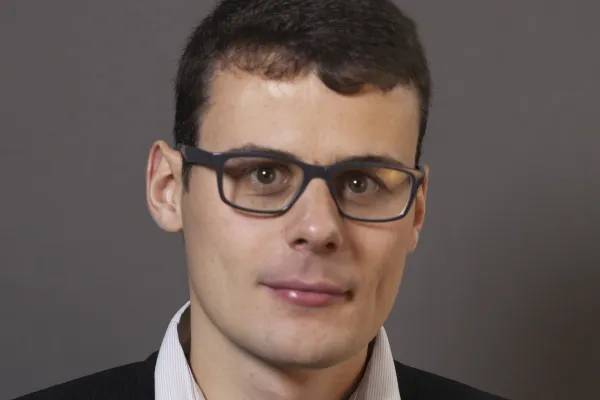
Torcheboeuf presented his invention, which is available in English, French, Spanish, Italian, German, Polish, and Portuguese, at the 58th World Day of Social Communications at the Vatican in February. He said the project was initially “born out of the craze surrounding ChatGPT,” OpenAI’s powerful chatbot that burst onto the scene in late 2022.
“I was quickly impressed by the power of artificial intelligence and the number of tools that could be developed using this technology,” he said.
Tinkering with the tech, he started creating chatbots that used customized databases to provide answers within specific fields.
“That’s when I came up with the idea of creating a chatbot that uses the teachings of the Catholic catechism and the texts of the magisterium: These texts exist completely freely and don’t change too much over time, which means that the answers are reliable and stable over time,” he noted.
The idea for CatéGPT, which is kept afloat entirely by donations, didn’t come out of nowhere — Torcheboeuf said his motivation for the project “corresponds to a concern I’ve had for a long time.” He said the area where he lives in Switzerland, while economically prosperous, lacks a vibrant practice of the Catholic faith.
“I’ve noticed that young Catholics today have a fairly low level of education; we’re often called upon to debate fairly complex social issues, and unfortunately we don’t have enough intellectual knowledge to do so properly,” Torcheboeuf said.
“Before trying to reform everything, we need to rediscover the fundamental texts of the Church. When we read these texts, we realize that many of the questions we ask ourselves are answered in encyclicals and catechisms.”
Torcheboeuf’s tool isn’t infallible, of course — no AI is. But the fact that CatéGPT makes use of publicly available documents on the Vatican website means that its curated sources are virtually guaranteed to be solid, and also that the tool’s database is far less complex than a massive AI like ChatGPT, which might be called on to opine on any topic imaginable.
Still, if the idea of asking an AI for guidance on the Church’s teaching makes you wary, you’re not alone — Catholic Answers’ AI, though well-intentioned, was less than favorably received.
Catholic Answers’ “Father Justin” — clearly an attempt to give a Catholic AI a more pastoral, human face — may have misfired, at least in its initial form. But the idea of making AI more pastoral is one that Torcheboeuf endorses. After all, he said, AI in its current form can be great as a training tool, but “it won’t be able to fully assist the Church in the way that priests, religious, or people fully invested in the Church can.” He said he is in the process of integrating video clips from “Catholic influencers” into CatéGPT’s answers in an attempt to “put a human face behind the theoretical answers.”
(Story continues below)
Subscribe to our daily newsletter

The Church under Pope Francis has been engaging with the idea of AI long before the release of ChatGPT. The pontiff, on numerous occasions, has called for the ethical use of the technology and is scheduled to speak at the G7 summit in June in Italy about the ethics of artificial intelligence, amid much talk in the wider world about the threats that AI could pose to humanity.
The explosion of generative AI tools and applications in recent years constitutes a revolution, Torcheboeuf said — and like any revolution, “it can be dangerous.”
Still, Torcheboeuf is quick to point out that “artificial intelligence is only intelligent if there’s a real human intelligence behind it.”
“I think that rather than being afraid of this technology, let’s try to be a player in this field and exploit its positive aspects. Right now, this technology is in full expansion, and there are places [for it] to be taken while remaining careful of course.”
Torcheboeuf said he expects that CatéGPT users will be surprised by the answers they get, in the sense that they will realize, perhaps for the first time, that “the Church has already asked itself most of the contemporary questions and answered them, with great wisdom and coherence.”
